'Secret Mall Apartment' and the pull and promise of abandoned spaces
What do we do with all this empty space? We take it over!

Last week I watched “Secret Mall Apartment,” a 2024 documentary that, on the surface, is about a group of eight artists who between 2003 and 2007 built a secret apartment in an unused alcove in the then newly-built Providence Place Mall in Providence, Rhode Island. They lived there for four years, until finally being caught by mall security - a brazen, brilliant act of urban reclamation.
The film is about far more than the apartment itself, and whether or not it can technically be called “art.” It’s more of a meditation on what belongs to whom - which spaces are accessible to the public, how those spaces are used or exploited, and who gets to live, work and create there before being pushed out by the forces of capitalism. It’s about a long, chaotic history of DIY art, created by independent, underground artists in a landscape often incredibly hostile to those working outside the mainstream. It’s about the perils of urban renewal. And it’s about life as art, and how the lines between what is made and the life one lives while making it can be quite blurry.
The artists in the secret mall apartment had their creative roots in the old factory buildings adjacent to what became Providence Place. Known as Fort Thunder, it was where for much of the 90s artists rented cheap space to make things, have shows and create a thriving arts scene. When they were kicked out so the property owners could sell to corporate developers, an outcry erupted - though as you might expect, the people with the money won out.
The artist at the center of the film, Michael Townsend, has worked out of Providence for more than 30 years, and embodies all the narrative threads the film follows. The apartment itself - 750 square feet of dusty, unfinished concrete wedged inside a blank space in the mall, only accessible by sneaking in and climbing up a metal ladder - is an extension of his life, work and approach to the world.
“[The apartment] starts as one thing and transforms into another. They’re doing it as a protest [against] gentrification. No, it’s a prank. No, you know, it’s artwork,” the film’s director, Jeremy Workman, told the Washington Post last year.
Whatever it was – art installation, clubhouse, middle finger to gentrification - it says a lot about how we manage to stay creative, authentic and equitable in a world that seems to fight against all those things.
The film made me deeply nostalgic for my own experiences making and experiencing art in places and spaces with oftentimes questionable legal legitimacy, and the inventive, exciting ways in which we cobble together resources to build community and express ourselves.
Chickenfest, for example, a Burning Man-esque music festival and giant party held somewhere in the woods in April each year, for UMaine students and their friends to get very high and drunk and listen to bands and let off some steam before the school year ended. Several times, it was held on public land at Pickerel Pond, off the Stud Mill Road in Milford. Another year, it was held at a defunct ski hill in Aroostook County. The music was a mix of jam bands, indie rockers, a punk band or two, and in its later years a DJ tent. One year I saw someone jump a motorcycle over a huge bonfire, Evel Kneivel-style. Hippies and punks and normies and townies and weirdos all made it work, in service of the music and having a good time together. By 2013, the cops had begun a serious crackdown, and it petered out not long afterwards.
Check out the rest of the videos in this series by scrolling down to find them. Gen Z only wishes they had such a fine selection of flannel shirts.
Electronic music as a genre comes directly out of underground parties in the 80s, in places like Chicago, New York and Manchester in the U.K, though admittedly, it took a while for it to make it to Maine. As a kid from the sticks, my first real experience with such a thing was in 2003. I remember sitting in someone’s dorm room at UMaine, awaiting an email that would tell people how to get to what was promised to be an epic rave. When it finally arrived in our inboxes, we drove out to the park and ride in Hermon and approached a single, specific vehicle, the occupant of which handed us a piece of paper with the real directions on it.
It sent us back to Orono, to an old warehouse near Ayers Island in the Penobscot River, where the abandoned Striar Textile Mill had been overtaken by DJs from all over Maine for - to my mind at the time, anyway - a proper rave dubbed Elysium, with cool lights and good sound and lots of people; several hundred, by my recollection. It all felt secret and special and very, very cool. We would have gotten away with it, too, if someone hadn’t narced on us to the Orono cops at 3 a.m.


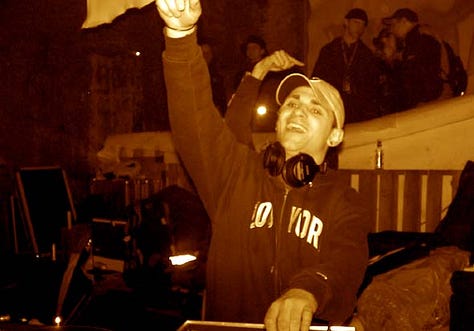
Ayers Island remains essentially abandoned, nearly 30 years after the last mill closed there. A former University of Maine professor, George Markowsky, bought the island in 1999 from the Town of Orono, with development plans that never materialized. According to Orono tax records, the island is now owned by Black Bear Development, a Hermon-based business founded by UMaine alum David Spencer. The Town of Orono has spearheaded some improvements to remaining island infrastructure, and a TIF redevelopment district was approved by the town council in 2019, but so far, no concrete plans to revitalize the island are on the table. Public access remains strictly forbidden.
Unmet public and private promises regarding the redevelopment of once-thriving commercial and industrial spaces are as commonplace in Maine as pine trees. In downtown Bangor, for example, there’s 30,000 square feet of abandoned space at 73 Central St., a five-story building owned by California resident and absentee landlord David Boyd, who has fallen behind on his property taxes seemingly every year since he bought the long-vacant property in 2003.
For about a year in 2007, however, 73 Central St. housed Ofelia’s, a space that was equal parts thrift shop, anarchic music venue, art gallery, food pantry, squat house for crust punks and creative hub for the community. It drew bands and artists from all around the state, and managed to somehow cross lines of class, background and taste - all while providing a much needed kick in the ass for the arts and culture scene in Bangor.
DIY venues were nothing new in Maine - punk and metal bands have rented out VFW halls and U.U. Church basements for ages. In the 2000s, The Kave in Bucksport turned an old bottle club into a legendary metal and hardcore venue, and Squashed Warehouse in Windsor carries on that tradition. Secret arts festivals like Sacred & Profane on Peaks Island and off-grid experimental venues like Ro-He-Ge in Belfast continue to this day.
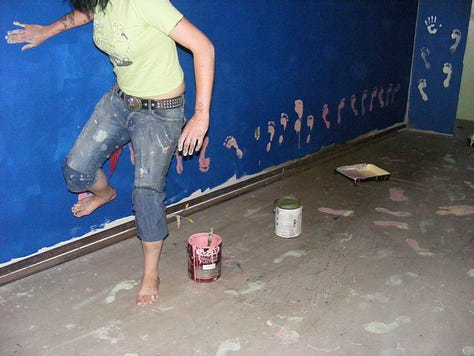

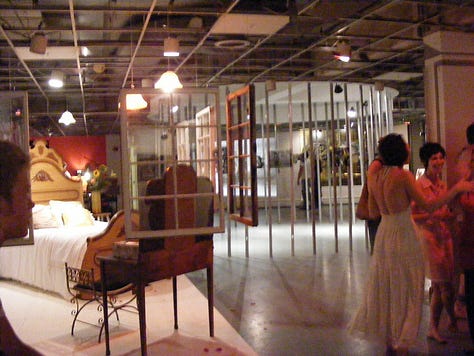
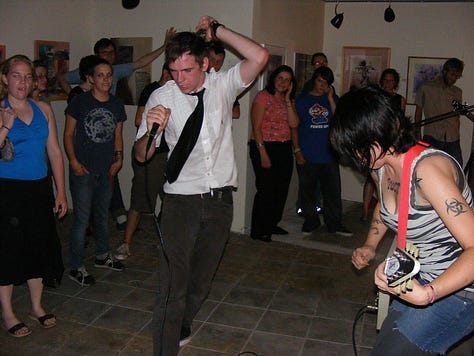
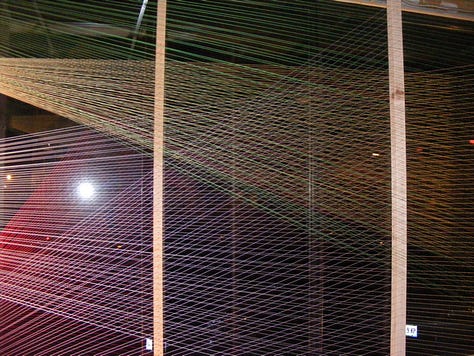

Ofelia’s seemed special, though, at least for Bangor. Its monthly art openings quickly became locally famous - where else could you see a lady that works in a bank rubbing elbows with a strung out punk kid? Where else would you have the space to build a huge art installation made up of old TVs and chopped up pieces of an old truck? There were cool rock shows every week. If you were hungry, you could get some food. If you needed a new outfit, you could get one for free or cheap. It had its own zine. It hosted poetry slams and workshops and political candidates. I met my husband there.
The only good part about having an absentee landlord living on the opposite side of the continent was that he didn’t seem to give anything remotely resembling a shit about what went on there. When code enforcement said the sprinkler system had to be fixed if anything was to continue to occur in the building, the owner simply didn’t answer. By the end of 2007, the building was condemned and Ofelia’s was over. It launched bands, businesses, books, relationships, some of which persist to this day. 73 Central St. is still abandoned, as it has been for the majority of the past 40 years.
Abandoned spaces persist across Maine, despite the state’s desperate need for more housing for middle- and working-class people. Condemned houses crumble in residential neighborhoods, left to rot by absentee owners or out of state banks after foreclosure. Towns and cities often don’t know what to do with old mill facilities or factories - or simply don’t have the money or vision to make anything happen.
And malls like the one in “Secret Mall Apartment” struggle to survive, as shopping trends change and as less people have any form of disposable income - or, in the case of the Bangor Mall, are kept on life support by a handful of remaining retailers, but are otherwise little more than a husk of what they once were.
I hope that someone, someday sees the good in reimagining spaces hollowed out by the vicissitudes of capitalism, and tries not to make the same mistakes prior generations made in trusting that corporations care about anything but their bottom line. I hope someone does something cool with 73 Central St., or Ayers Island, or all those empty buildings in former mill towns all over Maine. And I hope that somewhere, in some hidden corner of the Bangor Mall - or any crumbling mall, anywhere - there’s a secret mall apartment, or some artist operating a clandestine studio, or a band practicing in a long-closed Charlotte Russe or Build-a-Bear Workshop, making art in the middle of the night, building their own scene, against all odds.
Michael Townshend, the central figure in “Secret Mall Apartment,” will install a mural with his collaborator, Pamela Baron, and area students as part of Tape Art, his long-running public art project that creates temporary murals made of tape, during the day on Wednesday, Oct. 15 at the Blue Hill Public Library. A reception at 5 p.m. at the library will follow.



This brought back so many memories. I went to Chickenfest once, possibly twice. I remember someone's house or camp, maybe Stud Mill area. But Elysium and everything with Ofelia's–those times will forever live in my early-to-mid twenties memories of when things really seemed possible and I was cool. So cool!